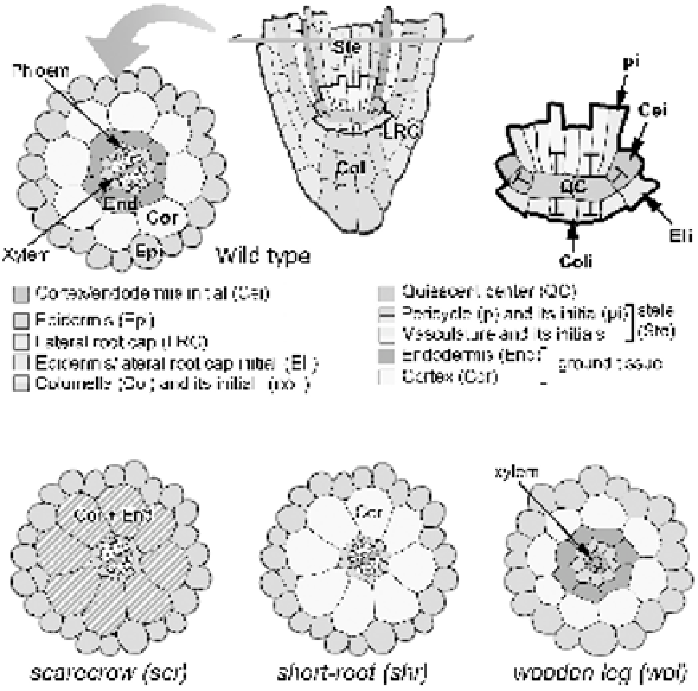Agriculture Reference
In-Depth Information
A
B
C
Figure 8.6
Schematics of wild-type and mutant
Arabidopsis
root structures. (A) Wild-type
longitudinal and transverse schematic; (B) the QC keeps surrounding cells in an undifferentiated state;
(C) radial patterns of three
Arabidopsis
mutants,
scr
,
shr
and
wol.
Adapted from Nakajima
et al.
(2001).
that both loci are essential for the periclinal asymmetric cell division that gives
rise to the two distinct cell files (Fig. 8.6C). In
scr
mutants, the remaining layer
has differentiated attributes of both endodermis and cortex, indicating that
SCR
is
required for cell division but not differentiation of the ground tissue (Scheres
et al.
,
1995; Di Laurenzio
et al.
, 1996). In contrast to
scr
, the single layer of ground tissue
in
shr
mutants is missing endodermal differentiation markers, indicating that SHR
is essential for both cell division and cell specification (Benfey
et al.
, 1993).
Both
SCR
and
SHR
genes have been identified at the molecular level (Di Lauren-
zio
et al.
, 1996; Helariutta
et al.
, 2000). They encode members of the GRAS family
of putative transcription factors, indicating that they regulate the asymmetric cell
division (and subsequent endodermal differentiation in the case of SHR) at a tran-
scriptional level (Pysh
et al.
, 1999). The
SCR
gene is expressed in the initial daughter
cell before its asymmetric division and remains expressed in the endodermal cell
layer after the division (Fig. 8.7A) (Di Laurenzio
et al.
, 1996; Wysocka-Diller
et al.
,










